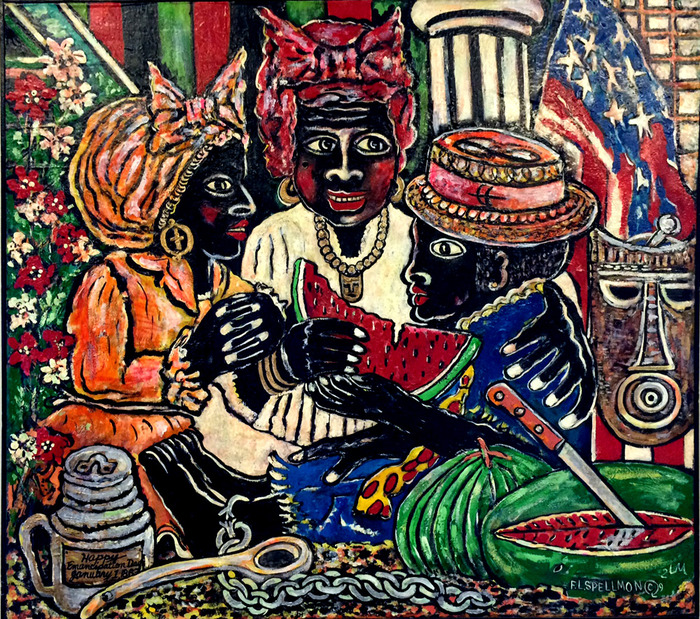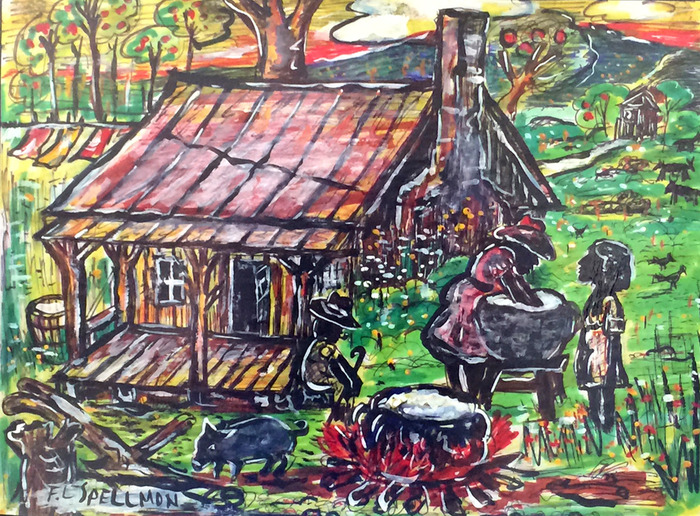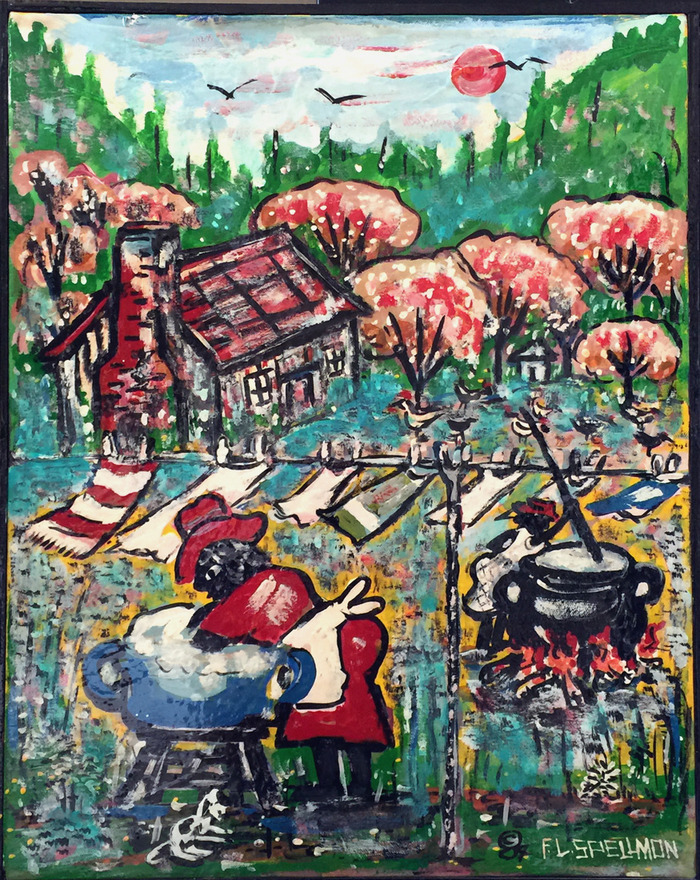Doc Spellmon Emancipation Day
-
- Doc Spellmon
- (1925 - 2008)
- San Antonio Artist
- Image Size: 40 x 40
- Medium: Mixed
- Emancipation Day
- Contact for Price & Info
- View All By This Artist
Details
Black folk art
-
-
Biography
Doc Spellmon (1925 - 2008)
F.L. “Doc” Spellmon (1925-2008)
One of San Antonio’s most prolific and renowned
artists, Spellmon’s career spanned decades, including 20 years as an Air
Force writer and illustrator between 1956 and 1976. His
subsequent “retirement” was one of the artist’s most productive
periods—creating an untold number of works, whose hallmarks are
generous applications of layered paint and masterful texturing of color. The
themes of his paintings speak to an array of themes—including Biblical
depictions, Slavery scenes, memories of his upbringing in East Texas, scenes
of African village life and portraits of historical notables.
For
decades, Texas-based folk artist F.L. "Doc" Spellmon painted scenes
of life in the South. Inspired by his rural upbringing, religious surroundings,
and African American heritage, Spellmon found national success through his
hundreds of paintings and mixed media pieces. His art focuses on the vitality
in everyday life, the joys of family and community, the universal themes found
in religious images, and the importance of cultural heritage in today's world.
F.L. Doc Spellmon and Ruth Mae McCrane at The Museum of
African-American Life and Culture - Dallas, Texas.
1996.
In: Art in America (July 1996). Brief review of exhibition
by Spellman and McCrane two contemporary Texas artists born in the
1920s whose subjects are rural and urban black community life. The
two artists in this show, "Doc" Spellmon and Mae McCrane,
were both born in the late 1920 he in rural East Texas and she in Corpus
Christi upon the Gulf Coast. Although the one and the other received formal art
training and have worked in art professions--Spellmon as a combat illustrator
for the Air Force and McCrane as a teacher--over the years they have adopted
consciously native turn of expressions that pay homage to, while also
transforming, the phraseologies of self-taught painters such as Clementine
huntsman and the Rev. Johnnie Swearingen. Both artists are the children of
Baptist ministers, and exhibitions of African-American religious life fill
their work. Spellmon's paintings are almost equally divided between
depictions of baptisms and church-going and images of farm work. McCrane's more
varied religious background, which includes her conversion to Catholicism and
adolescent experience as the secretary for a Pentecostal house of worship in
Houston, has prompted her to depict urban images of weddings, funerals,
covered-dish socials and meetings of The Ladies' Missionary Society. All of
these, like Spellmon's images of honky-tonks, waterside cafes and the
offices of politicians and doctors, are crowded scenes of community celebration.
Spellmon's paintings involve a conscious combination of folk traditions
with of the like kind modernist influences as American social realism, the work
of Mexican muralists and artists as varied as Maurice Prendergast and Georges
Rouault. As his phraseology has matured, Spellmon has gone for thicker layers
of freely applied paint overlaid by a heavy glaze. Beneath the glazing,
however, there continues to be an active vision of religious life and rural
occupations. In Pecan Pickers (1992) the men beating tree with drawn out poles
have both brought down an impressionist shower of orange nuts and scared up a
collection of white birds.



